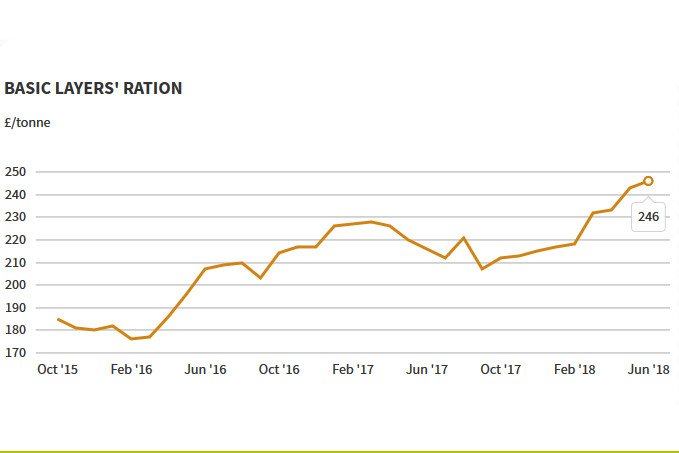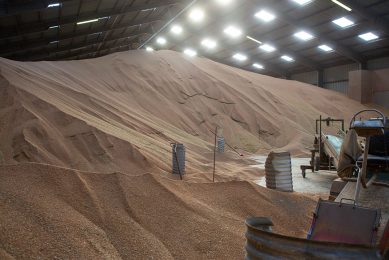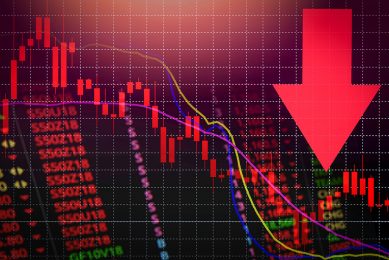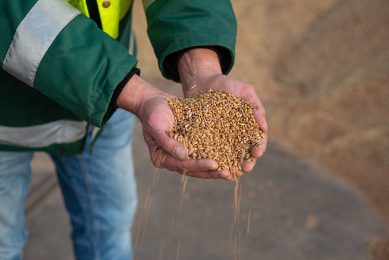Wheat price drives up rations

Ration costs hit new highs during the past month, while raw material pieces continued to show volatility.
The price of basic layers ration showed a net overall rise of £3/tonne, although this movement concealed sharp price changes in opposite directions for its principle components of wheat and soya.
Feed wheat has jumped forward by £12/tonne in a month dominated by concerns about dry conditions. Latest reports suggest that this pressure could be about to turn. Also, currency weakness against the dollar has been another factor driving prices higher.
“Old crop wheat is being driven by lack of availability, and both bioethanol plants are continuing to erode remaining stocks,” comments Humphrey Feeds. “The May AHDB supply and demand figures indicate the tightest UK wheat market in four years. Domestic consumption is significantly higher since March.”
Meanwhile soya has fallen back by £21/tonne as world markets go through a volatile period.In South America, a truck drivers’ strike has disrupted exports of soya, while the normal balance of world trade will be altered by the need for Argentina to become a net importer of soya this year for the first time, following the crop damage due to drought earlier in the growing season.
GRAIN MARKET DRIVERS
WHEAT – Dry weather concerns are now emerging in various parts of the world, including Canada, the Black Sea Region, Eastern Europe and Australia. In Canada, most of the key prairie growing regions are said to be affected, while 70% of Australia’s winter wheat crop was planted in dry conditions. | ||
WHEAT – Expectations of rainfall coming to the rescue of spring crops already planted in the US has brought a pause in the upward surge in wheat prices. The latest USDA crop progress report gave a more encouraging picture for US spring grains in general (maize, wheat and barley). | ||
SOYA – The commencement of import tariffs on metals into the US has ratcheted up the uncertainty between the US, the EU and China in particular. This has led to downward pressure on US agricultural export prices. |













